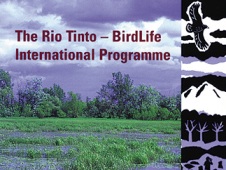
The corporate sector often has a poor reputation where biodiversity conservation is concerned, especially in countries with weakly developed regulation. However, some businesses recognise that working in partnership with conservation NGOs can bring real gains for biodiversity while achieving business goals. Here an example is presented of such a partnership between Rio Tinto and BirdLife International.
The corporate sector often has a poor reputation where biodiversity conservation is concerned. Especially in countries with weakly developed regulation, it has often appeared that businesses are happy to take short-term gains even if these come at tremendous environmental cost.
However, some more far-sighted businesses, often with activities that directly impact the environment, are increasingly recognising that they have a stake in biodiversity conservation. This makes sound business sense: by incorporating biodiversity values into operational and strategic planning, businesses can avoid costly confrontation, improve their licence to operate and achieve meaningful reputational gains. Working in partnership with a conservation NGO can bring real gains for biodiversity while achieving business goals.
Rio Tinto, a multinational mining company, has such a partnership with BirdLife International. This works in a number of ways to address the company’s sustainable development objectives while achieving a range of benefits to bird conservation. The partnership has a particular focus on Important Bird Areas (IBAs) that are close to individual Rio Tinto businesses. For example:
These partnerships are achieving benefits that are locally relevant, yet aligned with regional and global conservation frameworks and with wider business objectives.
Related Case Studies in other sections
Related Species
Compiled: 2004 Copyright: 2004
Recommended Citation:
BirdLife International (2004)
Business needs to take biodiversity on board .
Downloaded from https://datazone.birdlife.org/sowb/casestudy/business-needs-to-take-biodiversity-on-board- on 22/12/2024